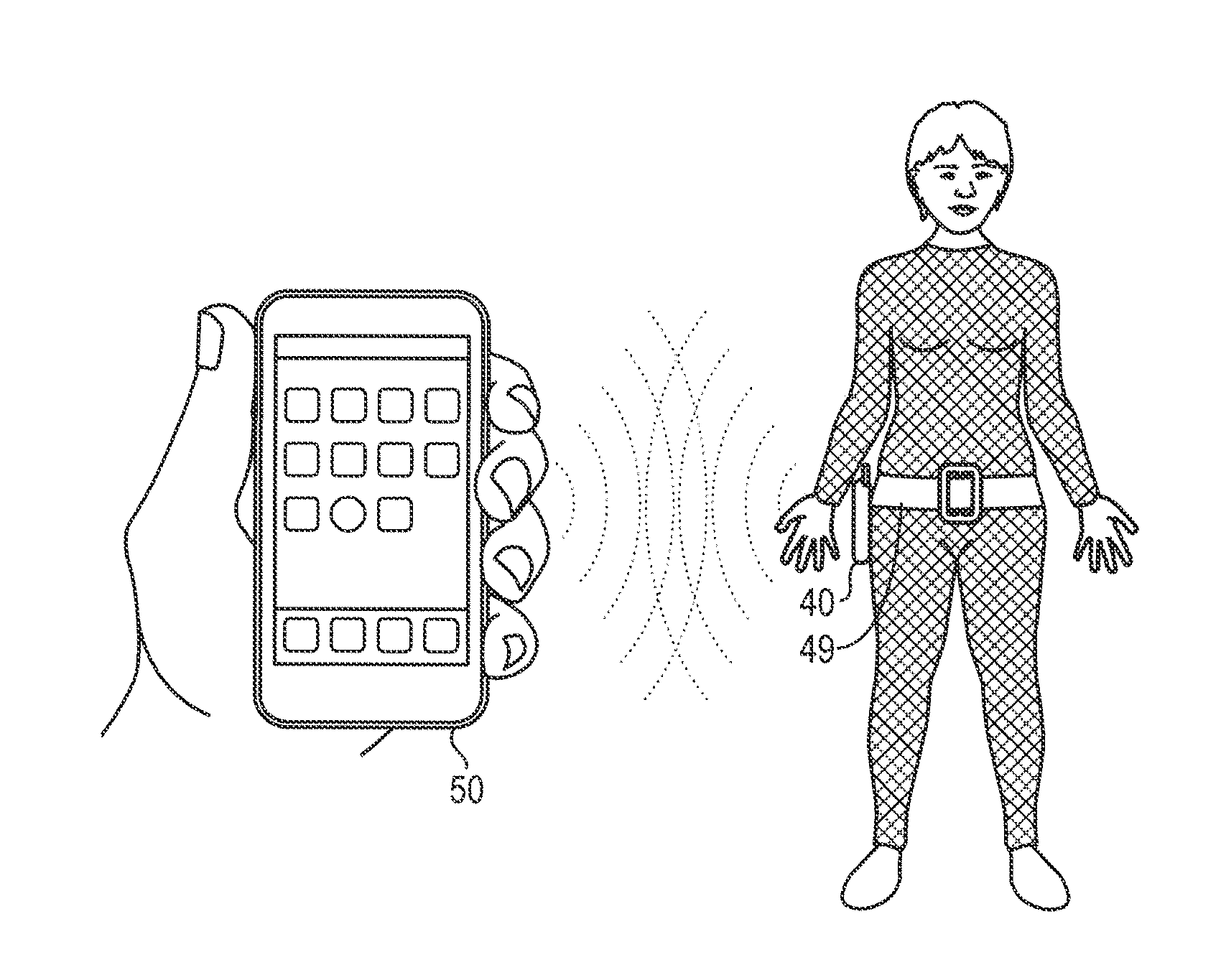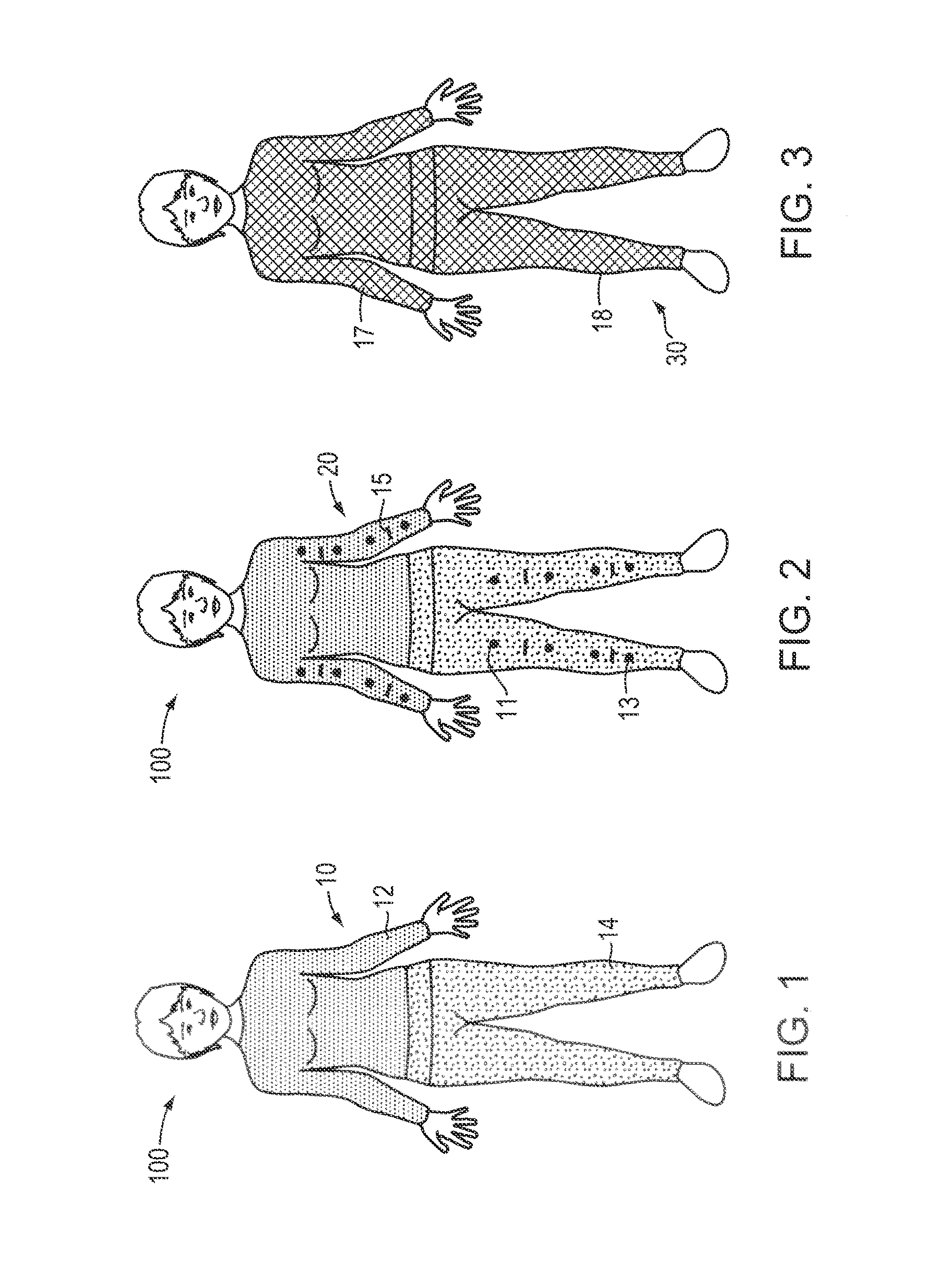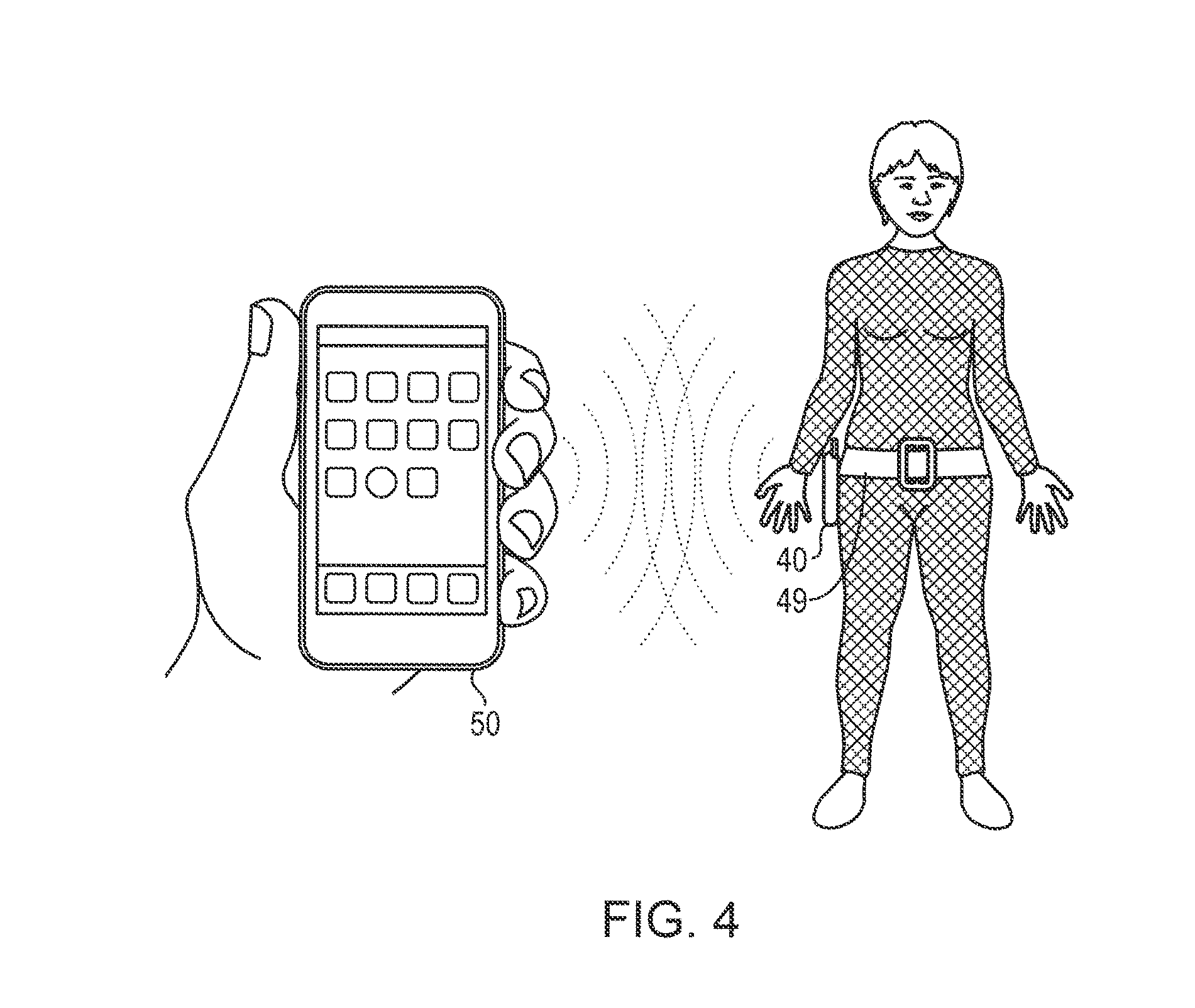Heated garment for medical applications
- Summary
- Abstract
- Description
- Claims
- Application Information
AI Technical Summary
Benefits of technology
Problems solved by technology
Method used
Image
Examples
Embodiment Construction
[0041]In broad overview, FIGS. 1-5 show various embodiments of the present invention as they relate to an undergarment 100 or set of undergarments with sewn-in heating elements 15 placed over affected areas of the body and sewn-in electromyographic contacts (EMG leads 11) and / or electrodes 13 placed over certain muscles. The heating elements 15, the electrodes 13, and the EMG leads 11 may be electrically and operationally coupled to a battery supply 48 and CPU 42. The levels of heat and electrical stimulation output by the garment 100 may be programmable and adjustable at any time by a wearer of the garment 100. Moreover, the components included in the specific garment 100 may vary slightly for each disorder to be treated. For example, versions for treating spasticity may include heating elements 15, EMG leads 11 for monitoring, and electrodes 13 for stimulation; versions for treating Willis-Ekbom disease may include heating elements 15 and EMG leads 11 for muscle monitoring; and ve...
PUM
 Login to View More
Login to View More Abstract
Description
Claims
Application Information
 Login to View More
Login to View More - R&D
- Intellectual Property
- Life Sciences
- Materials
- Tech Scout
- Unparalleled Data Quality
- Higher Quality Content
- 60% Fewer Hallucinations
Browse by: Latest US Patents, China's latest patents, Technical Efficacy Thesaurus, Application Domain, Technology Topic, Popular Technical Reports.
© 2025 PatSnap. All rights reserved.Legal|Privacy policy|Modern Slavery Act Transparency Statement|Sitemap|About US| Contact US: help@patsnap.com



